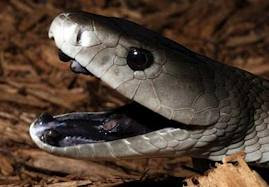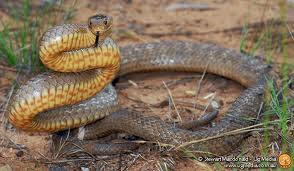Mankind has the honor of quite possibly being the most destructive force to ever hit mother nature. This list looks at some of the more recent, probably lesser known extinctions that humans have lent a helping hand to. Whether by over hunting or over population, driving a species to extinction is nothing to be proud of and it’s certainly not slowing down.
10. Thylacine
Commonly known as the Tasmanian Tiger, the Thylacine was the largest known carnivorous marsupial of modern times. Virtually wiped out in the wild due to constant hunting (they were thought to be a threat to sheep and other small farm animals) and the encroachment of humans on their already limited habitat the Thylacine was finally recognized as being in danger of becoming extinct in 1936, too little, too late as that same year the last Thylacine, named Benjamin, died on 7 September as the result of neglect — locked out of its sheltered sleeping quarters and exposed to freezing temperatures at night in Hobart Zoo, Tasmania. 60 years on there are still claims of sightings but all are yet to be confirmed.
9.Quagga
The Quagga was a southern subspecies of the Plains Zebra. It differed from other zebras mainly in having stripes on the head, neck, and front portion of its body only, and having brownish, rather than white, on its upper parts. The last free Quaggas may have been caught in 1870. The last captive Quagga, a mare, died on 12 August 1883 in Amsterdam Zoo, where she had lived since 9 May 1867. It was not realized that this Quagga mare was the very last of her kind. Because of the confusion caused by the indiscriminate use of the term “Quagga” for any zebra, the true Quagga was hunted to extinction without this being realized until many years later. The Quagga became extinct because it was ruthlessly hunted down for meat and leather by South African farmers, also they were seen by the settlers as competitors, like other wild grass eating animals, for their livestock, mainly sheep and goats.
8. Passenger Pigeon
The story of the Passenger Pigeon is one of the most tragic extinction stories in modern times. As recently as around 200 years ago they weren’t anywhere near extinction. In fact, they were actually the most common bird in North America, and some reports counted single flocks numbering in the billions. Pigeon meat was commercialized and recognized as cheap food, especially for slaves and the poor, which led to a hunting campaign on a massive scale. Furthermore, due to the large size of their flocks, the birds were seen as a threat to farmers. The last Passenger Pigeon, named Martha, died alone at the Cincinnati Zoo at about 1:00 pm on September 1, 1914.
7.Golden Toad
The first record of the Golden Toad was by herpetologist Jay Savage in 1966. The toad, recognized by its brilliant golden orange color, was native to the tropical cloud forests which surround Monteverde, Costa Rica. None have been seen since 1989. It last bred in normal numbers in 1987, and its breeding sites were well known. In 1987, due to erratic weather, the pools dried up before the larva had matured. Out of potential 30,000 toads, only 29 had survived. In 1988, only eight males and two females could be located. In 1989, a single male was found, this was the last record of the species. Extensive searches since this time have failed to produce any more records of the golden toad.
6.Caribbean Monk Seal
The Caribbean Monk Seal was the only known seal which was native to the Caribbean Sea and the Gulf of Mexico. It is also the only species of seal to go extinct directly due to human causes. The Caribbean monk seal was the first New World mammal to be discovered by Columbus and his company on the coast of Santo Domingo in 1494. It appears in the account of Columbus’ second voyage to America. Columbus promptly ordered his crew to kill eight of the animals, which he called “sea-wolves”, for food, paving the way for exploitation of the species by European immigrants who came in his wake. Since then, the once abundant seals have been hunted for their oil and slaughtered by fishermen, who regarded the animals as competitors. It was officially declared extinct just last year, on June 6th, 2008, although the last recorded account of the species was made at Serranilla Bank between Honduras and Jamaica in 1952. Like other true seals, the Caribbean Monk Seal was sluggish on land. This, along with its lack of fear for man, unaggressive and curious behavior, as well as human hunting, and early habitat exclusion by humans throughout their range may have dramatically speed up their decline and likely contributed to its demise.
want to know about more animals that have gone extinct? well then, come back next time and learn more!!

























